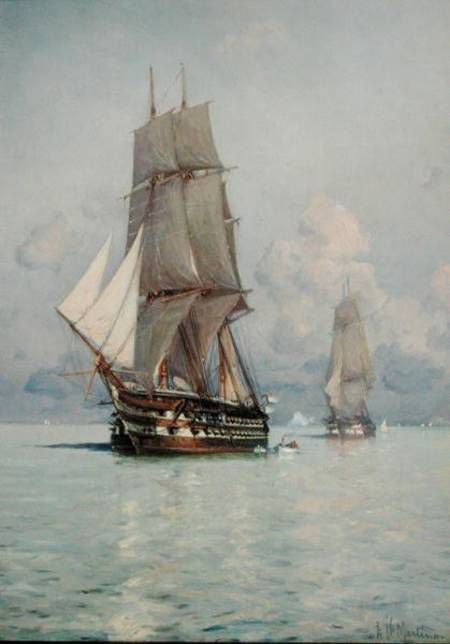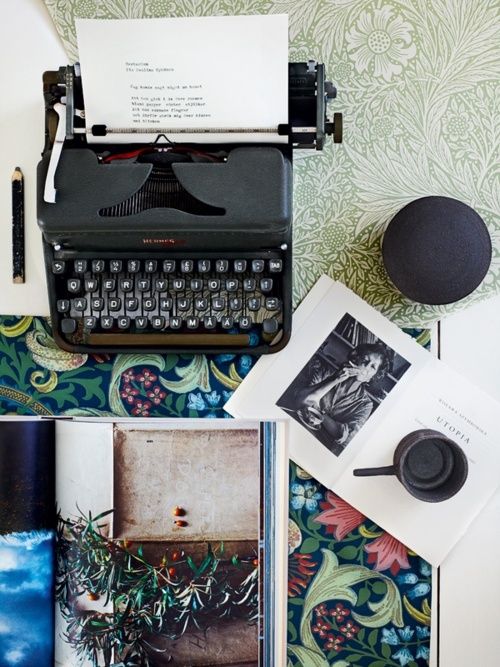
I have always been obsessed with plans for the day and routines. At the same time I know that I can’t stick to a particular routine for more than one month. That’s mainly because I had a double-base this year, Rome and Sorrento, so I need to continuously review my routine plan.
In Rome it’s harder to have a routine, since there are things to do all the time and life is quite hectic and unpredictable.
On the other hand, when I’m in Sorrento, I get back to my antisocial behaviour, and it’s much easier to stick to a routine and be productive. I have been away from Rome for almost a month now, so I had all the time I needed to establish a routine that really works for me and makes me happy. Here how it went so far:
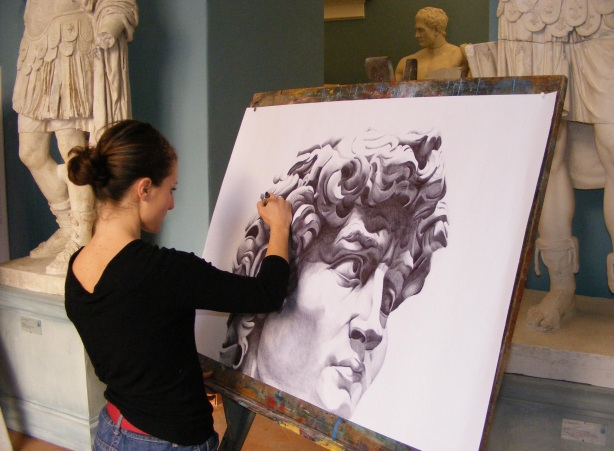
Ho recentemente ritrovato nei meandri di internet un mio articolo del 2008, riguardante gli esami di ammissione in tre delle più prestigiose Accademie di Belle Arti italiane, Roma, Napoli e Firenze. Al tempo mi recai nelle tre città per ovviare alla latitanza di informazioni sul web riguardo agli esami di ammissione, quello che trovai invece fu una sorta di specchio dell’Italia. Agli esordi del 2014 non penso che la situazione sia molto cambiata.
Viaggio tra le Accademie di Belle Arti d’Italia
Le informazioni sulle Accademie di Belle Arti Italiane sono scarse, i siti ufficiali poco aggiornati, le segreterie avare di informazioni, i forum a cui si rivolgono i ragazzi telegrafici. Abbiamo dato un’occhiata alle prove d’ammissione nelle Accademie di Belle arti di Firenze, Roma e Napoli: ecco il verdetto.
“Di dove sei?”
A farmi la domanda è una ragazza dall’aspetto un po’ alternativo, lunghi capelli castano chiaro e look hippie: “Io sono di Bologna, ho fatto il test di ammissione anche là, ma dicono che sono tutti raccomandati, e comunque è meglio farlo da più parti, perché se non entri hai sempre un’altra possibilità”.
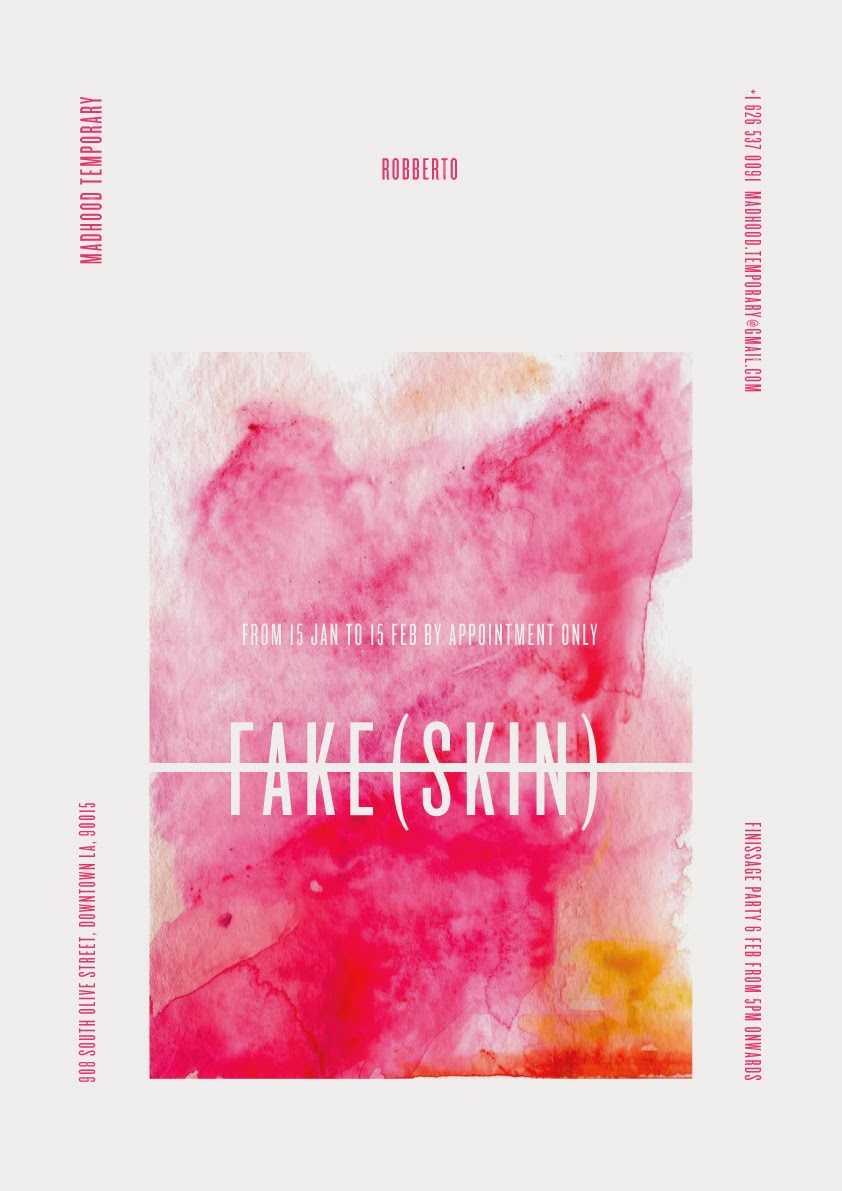
Robberto is a talented emerging Italian artist that I have been not only following but also collecting.
I recently wrote the text for his exhibition Fake (Skin), now on at Madhood Temporary in Los Angeles. I posted it below along with some pictures that Robberto sent me as a preview.
FAKE (SKIN)
For his first solo show in the United States, Robberto is presenting a new series of work realized during his stay in Los Angeles.
His research starts from a linguistic observation around the meaning of the word buck, that is used for call “dollars ”
The artist decided to go deeper into this duality and study the etymology of this expression, finding out that buck is the abbreviation of buckskin, a common medium of exchange in trading between the natives and the Europeans.
There are documents from 1748 saying “Every cask of Whiskey shall be sold to you [Indians] for 5 Bucks.” The transition from buckskin to dollars seems only natural.
This finding leads the artist to think about the perception of wildlife and nature in the city of Los Angeles.
He reached the conclusion that the nature in town, is just a fake perception of the real natural environment and that the trees, the water and the animals have just been pushed in 150 years, a really short time, to cohabit together with 20 millions of peoples, this created in him a feeling of displacement.
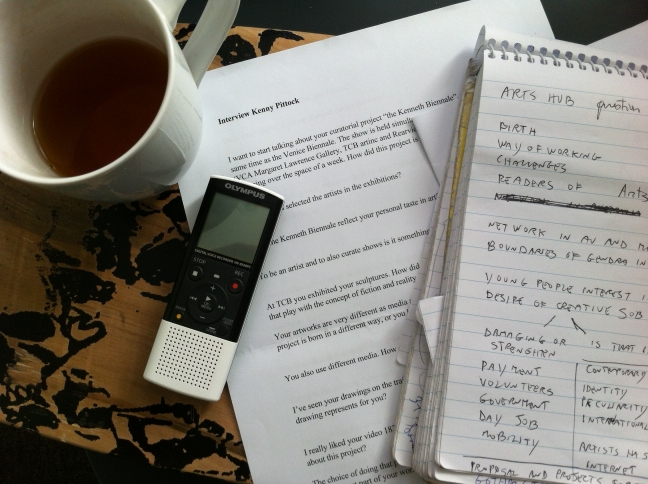
I just came back from my 32nd interview for my reportage in Australia, so I finally feel like I can tell my opinion about how to interview an artist.
The first thing you have to do is obviously contact the artist and you usually do that through her/his mail on her/his personal website.
The first mail has to be a quite formal style, without exaggerating though.
You have to be short and clear, explaining the artist why you want to interview her/ him and what aspects of her/his work are you interested in.
If your interview is part of a bigger project, like a reportage, spend a few words to inform the artist about it.
Don’t forget to explain her/him if this is your own project or if you are working for a magazine.
In this last case it would be nice to put a link to the website of your magazine, so the artist can have a look.
Put also your own website or blog in the signature, along with your personal page on a web magazine that hosts your work, if you have one.
That would give you credibility and would also give the artist the possibility to take a peek at your style and at the kind of articles you usually write.
The next mails would probably me more informal. At this point you can get rid of all the links in your signature, the “best” and “regards” and sign with just your given name.
In your second mail you can suggest the artist a place where you can have the interview.
The most common places are the artist’s studio, a nice and quite café, the space where the artist has currently a show or the gallery that represents him.
Give options to the artist. To meet her/him in his studio would be ideal – you can guess much more from the artist’s natural habitat than from outcomes of a simple conversation.
Of course, you can suggest to meet in the studio, but not all the artists have one and not everyone is happy to let a suspicious journalist or art critic in. If the artist tells you that his studio is empty or messy at moment, just don’t bother. Above all don’t insist.
If you are doing the interview in your own city, you probably would know the most quiet and suitable cafe for an interview. If you are abroad don’t be shy, just ask the artist if he knows a nice cafe to meet.
The choice would probably tell you something about the artist lifestyle and tastes.
In any case discover new places in a new city is always exciting.

Productivity and Bohemia are concepts which are seldom associated.
You have to admit though that having grown up reading Sartre and Simone the Beauvoir – or at least having seen the pictures – you are not immune to the charms of café.
Every city has is own aesthetic when comes to cafés.
Not everyone is snob enough to live in Paris and go to the Café De Flore – whom has turned into an established place for loaded folks anyways.
What it is left to us is send to hell the Café De Flore, and create our own, well… café mythology.
If you live in Rome you certainly know the cafés Canova and Rosati in Piazza del Popolo.
During the sixties these two cafés gathered the so called “artists from Piazza del Popolo”, but now Canova and Rosati are the equivalent of the ultrachic cafés in Saint Germain, Paris.
Sure, it is always cool to pass by Piazza del Popolo and say hi to the Italian dandy artist Ontani– last time I checked he had a permanent permit to be parked at Canova – yet these cafés are too posh for us.
Same things with the cafés in Via Veneto, once Antonioni, Mastroianni and Fellini’s reign.
You have to consider as well that in Italy there is this tradition of kicking you out if you take too long to sip your coffee.
If you are in Rome and you are a writer looking for a place to read and write quietly, you will be likely accepted in some cosy and shabby-chic looking cafés in Via Giulia, Pigneto or San Lorenzo.
You can start to create your own café mythology from there.
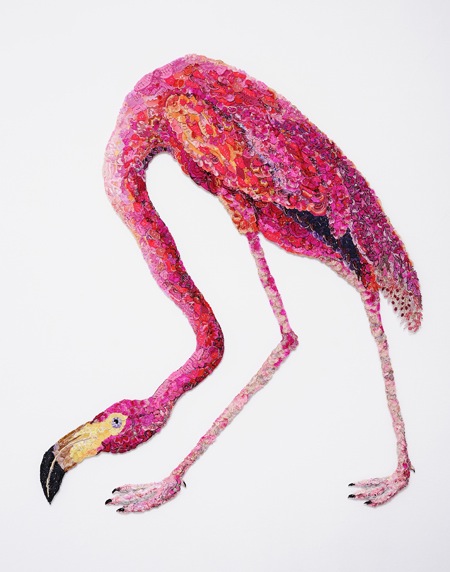
Melbourne. I consider the afternoons devoted to see art exhibitions like a sort of cultural safari.
You need a friend to enjoy it and a location where it is likely to meet dangerous, exotic or fascinating artworks.
In Melbourne some good locations for exhibition safaris are Fitzroy, the CBD and South Yarra.
So a couple of days ago I was in South Yarra with a friend and we had the chance to see the wonderful exhibition of Louise Saxton called “Sanctuary too” at Gould galleries.
No other show could be more suitable for an art safari: the subjects were in fact animals, insects and birds after vintage illustrations from natural history books and colonial painters.
The particularity was that all these artworks were realized in needlework, which means lace and nylon tulle arranged to form the images of animals.
All the pieces of this sort of collage were ties together by needles. Only coming closer to the artworks you can notice the needles, as well as the real nature of the different tulle.
That way the animals look stabbed, and at the same time the illusion of shape formed by the colourful patches is revealed.
My friend was fascinated by this coexistence of beauty and cruelness as well.

Extreme case: let’s say you are an art journalist doing a reportage in a remote third world country.
You do all the research, you use all the common sense and you even follow some “how to” on the internet.
Even then, you could find yourself in a difficult situation like: I fixed one month in advance an interview with artist Pinco tomorrow. But I just meet artist Pallino and I can interview him only tomorrow, because he leaves the day after tomorrow. A rapid check to your mailbox and… crap! The artist Pollaiolo wants to anticipate his interview…apparently he is free only tomorrow!
So, let’s make the point. We have three interviews to prepare in one single day.
And you wake up late today too!
Don’t cancel an interview. Don’t even think about it.
To cancel an interview is bad. It’s always bad.
I did that just two times and each time a dire calamity had struck me.
The first time my boyfriend threw me out of our house, the second time a crater suddenly opened in the ground devouring my beloved kitten.
So don’t do that. Seriously.
What you can do is forget about the tan today, ignore the heat and the shining sun and sit in front of your computer.
Now all your efforts will be concentrated on doing an accurate research and at the same time get all the work done as fast as possible.
I usually use the following method.
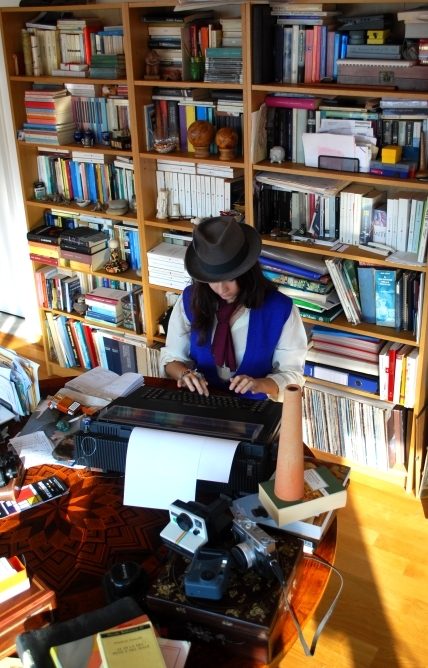
I just come back from Perth, Western Australia. I was there for a reportage about the local contemporary art scene.
Before leaving I wrote this list to clarify my own ideas and to see what I learnt from my mistakes.
Maybe someone else could find it useful too.
“To be an art reporter is fun, but if you don’t plan everything in the details it can be very stressing.
If you are lucky someone, maybe the magazine you collaborate with, has sent you in foreign city or country to do an amazing five pages reportage about the local art scene. If you are extra lucky maybe your magazine would be also open to pay you for that.
But you know, even Oriana Fallaci and Martha Gellhorn would have an hard time to find good assignment nowadays.
Times are tougher and tougher, especially in the field of contemporary art.
If you’re an enterprising free lance journalist or art critic you can probably decide to make a project of your own and try to sell it later to magazines and newspaper. Maybe you can even make a book out of it.
Anyways remember to plan every step in advance.
1. Focus your research
The first thing you have to do is to focus your research. Maybe you are interested just in the painting scene of that city, or just in the hipster scene, or the influence of craft on contemporary art.
Or maybe you want to have a general picture, not very specific but quite thorough.
This second kind of macro reportage is the one I personally like the most. However my tips are valid also if you are conducting a more specific research.
2. Make a previous research on the city
Have a quick look of what other people already wrote about the art scene. Don’t exaggerate, it’s better to not build preconceptions based on what other people thinks. The best thing to do is read a novel or two set in the city you are going to visit. Have a look at a very general travel guide that gives you neutral information, like Lonely Planet or something like it.
If you find some catalogues of exhibition about artists from the city that you are going to visit, try to have a look at it.
If you know someone in your own city that has a link with the place you are going to visit, talk with them, either informally or with an interview.
If these people have a link to the art world is better, but don’t undervalue the impressions of friends or acquaintances disconnected from the scene.
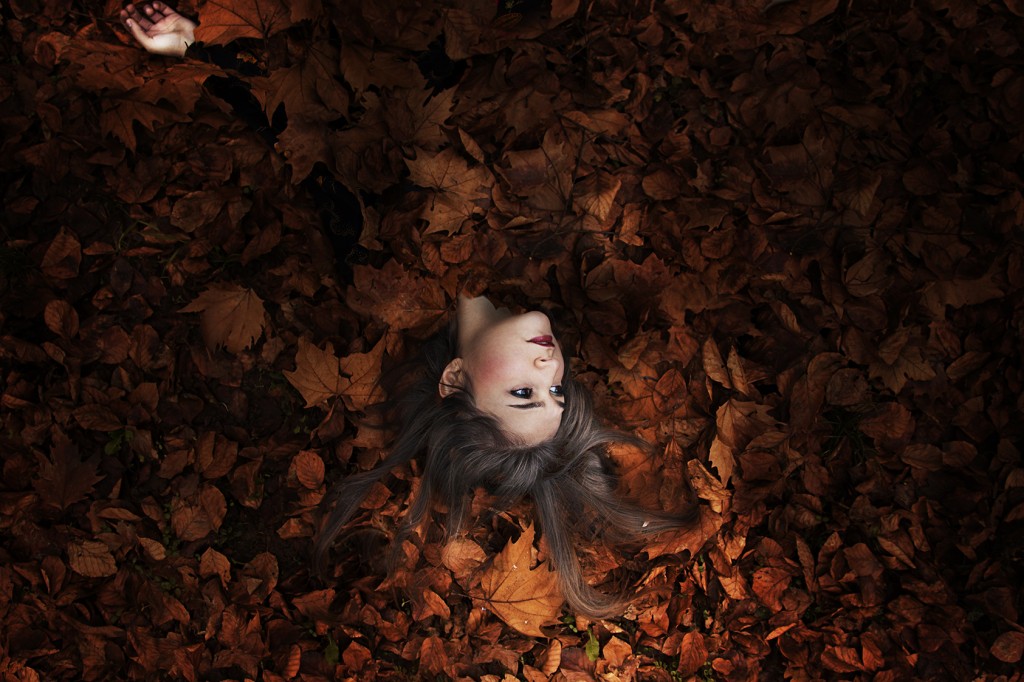
This is a short essay about the Italian photographer Sara Magni that I wrote some time ago for the catalogue of “Fuori 5”, an exhibition at Galleria Gallerati, Rome:
“Waking up from a nightmare of desolation, discovering to be frightening and completely alone.
Founding themselves in a cruel and frozen night, in a pasolinian lawn. When the concrete buildings are the background, you suddenly realize that your room’s walls are just a fleeting shelter. Is it all just in our own mind, or is it actually a torched dream?
The series “Doppio Incubo” (Double Nightmare) was realized for the Premio Cairo at the Permanente in Milan. In this work the author explores the theme of man’s estrangement in the city. Sara Magni ventures in the human psyche, taking snapshots directly from the subconscious. She enacts characters that seems out of context, but at the same time she forced us to deal with them. No one has the voice to cry his longing for an “elsewhere”, we can read in his photos a frozen shadow of reality. Her research is displaced in the suburbs and non-places loaded with a reflection or anxiety, a sort of alienation in between Antonioni and David Lynch.
Read More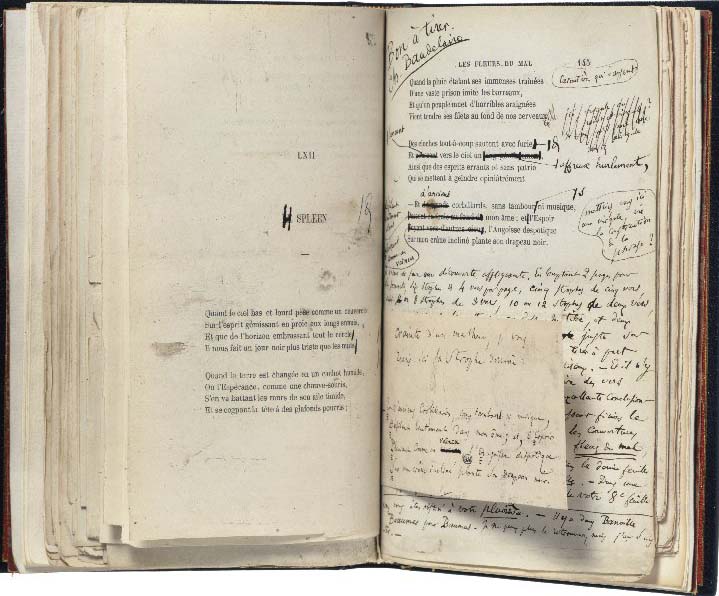
I fiori del male si studiano nelle scuole.
Si studia quanto scandalo suscitò il volumetto di poesie alla sua uscita e quanto erano provocatori gli argomenti proposti, mentre contemporaneamente gli alunni nell’aula sbadigliano, perché sono in un banco, perché una professoressa gli sta spiegando un poeta, già bello e crepato tra l’altro, ma in fin dei conti poco importa questo, non è che si interessino ad Umberto Eco solo perché è vivente, forse alle ultime vicissitudini musicali dell’idolo tv Marco Carta, ecco, quello forse si, oppure all’uscita imminente dell’ultima versione di GTA, il nuovo fortissimo videogioco, o magari, volendo proprio tirare in ballo la letteratura, il nuovo libro di Moccia, che quello si che ci fa sognare, altro che Baudelaire!
Va bene, ok, non tutti i GGGiovani sono così, quindi se voi che leggete siete dei ragazzi e vi siete sentiti offesi, rallegratevi! La vostra virtuosità nel soffermarvi su letture più edificanti risalterà più fulgida che mai per contrasto. Resta il fatto che seppure voi non vi considerate così, la maggior parte dei vostri coetanei lo è, e infatti tutti in quella classe, tranne forse chi era in bagno quando la professoressa di francese scriveva lo schemino alla lavagna (semmai lui si farà prestare il quaderno dall’amico) tutti quanti ricopieranno lo schema, trascrivendo tutte quelle parole chiave che gli faranno ricordare la poetica dell’autore: Scandalizzare Il Borghese, Provocare La Società, Poeta Maledetto, poi a casa a imparare sistematicamente la lezione, il giorno dopo essere interrogati e basta, la prossima settimana tocca a Rimbaud.
Così è transitato Baudelaire per il cervello di un adolescente, così ne è fuoriuscito, ed è già tanto se da grande, quando il poeta gli verrà nominato da qualcuno che ne sa meno di lui, potrà dire, se colto da un sussulto di sincerità “ah si…lo studiai ai tempi del Liceo…”, più probabilmente si limiterà ad annuire.

